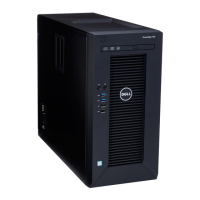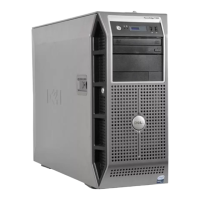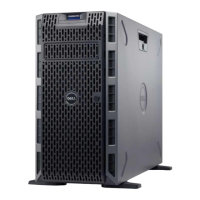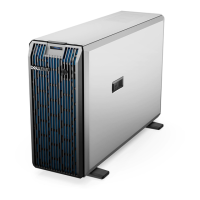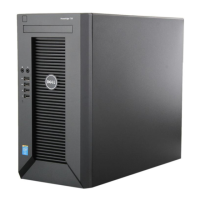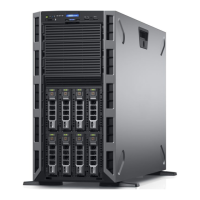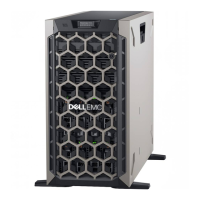Do you have a question about the Dell poweredge t330 and is the answer not in the manual?
Provides steps for unpacking, installing, connecting peripherals, and powering on the server.
Guides on configuring iDRAC IP address and logging into the iDRAC interface.
Details system security, passwords, boot manager, and lifecycle controller.
Covers general safety warnings, precautions, and steps before working inside the system.
Details installation/removal of processor, heat sink, and power supply units.
Covers system battery, control panel assembly, and system board procedures.
Provides safety precautions and preparation steps for converting the system to rack mode.
Covers initial safety, startup failures, external connections, and video subsystem troubleshooting.
Details troubleshooting for power supplies, cooling systems, memory, and drives.
Covers troubleshooting for storage controllers, expansion cards, and processors.
Introduces the Embedded System Diagnostics (ePSA) for hardware testing and troubleshooting.
Provides steps for unpacking, installing, connecting peripherals, and powering on the server.
Guides on configuring iDRAC IP address and logging into the iDRAC interface.
Details system security, passwords, boot manager, and lifecycle controller.
Covers general safety warnings, precautions, and steps before working inside the system.
Details installation/removal of processor, heat sink, and power supply units.
Covers system battery, control panel assembly, and system board procedures.
Provides safety precautions and preparation steps for converting the system to rack mode.
Covers initial safety, startup failures, external connections, and video subsystem troubleshooting.
Details troubleshooting for power supplies, cooling systems, memory, and drives.
Covers troubleshooting for storage controllers, expansion cards, and processors.
Introduces the Embedded System Diagnostics (ePSA) for hardware testing and troubleshooting.
| Dell E-Value Code | PET3303a |
|---|---|
| Processor cache | 8 MB |
| Processor cores | 4 |
| Processor model | E3-1220V6 |
| System bus rate | 8 GT/s |
| Processor socket | LGA 1151 (Socket H4) |
| Processor frequency | 3 GHz |
| Processor cache type | Smart Cache |
| Processor lithography | 14 nm |
| Processor manufacturer | Intel |
| Processor boost frequency | 3.5 GHz |
| Processor operating modes | 64-bit |
| Number of processors installed | 1 |
| Operating system installed | No |
| Compatible operating systems | - |
| Chassis type | Tower (5U) |
| Rack mounting | Yes |
| HDD size | 2.5 \ |
| HDD speed | 10000 RPM |
| HDD interface | Serial Attached SCSI (SAS) |
| Optical drive type | DVD±RW |
| Supported HDD sizes | 2.5, 3.5 \ |
| Total storage capacity | 300 GB |
| Maximum storage capacity | - TB |
| Number of HDDs supported | 8 |
| Supported storage drive interfaces | SAS, Serial ATA |
| Power supply | 495 W |
| Internal memory | 8 GB |
| Memory clock speed | 2400 MHz |
| Internal memory type | DDR4-SDRAM |
| Maximum internal memory | 64 GB |
| On-board graphics card model | Matrox G200 |
| Cabling technology | 10/100/1000Base-T(X) |
| Ethernet interface type | Gigabit Ethernet |
| USB 2.0 ports quantity | 5 |
| Ethernet LAN (RJ-45) ports | 2 |
| USB 3.2 Gen 1 (3.1 Gen 1) Type-A ports quantity | 3 |
| Depth | 542.2 mm |
|---|---|
| Width | 218 mm |
| Height | 430.3 mm |
